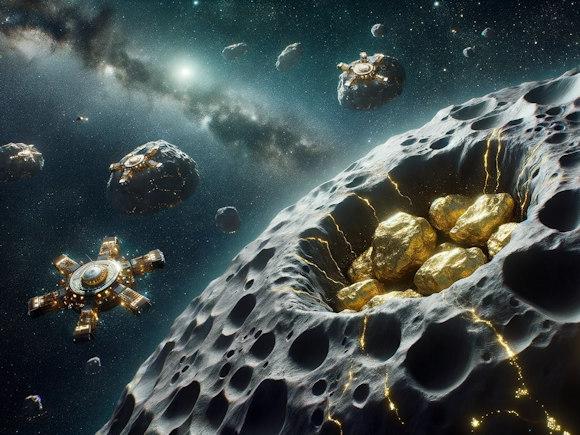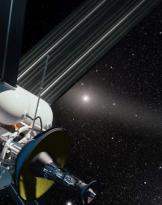The exploration of asteroids represents a turning point in the way man will conceive space and its use. These represent direct testimony of the fundamental constituent elements of planetary formation, of inestimable value from a scientific point of view, but also from an economic point of view, because they mine gold, iron, diamond, coal and rare earths. Furthermore, from the perspective of space expansion, the search for water on asteroids takes on particular importance, allowing subsistence and reducing costs for human settlement, as well as use as fuel for launchers or shielding from radiation.
However, before being able to reach a complete phase of planning and launching missions, the study and evaluation of present resources are crucial.
To date, the limited number of asteroids or dwarf planets visited, only 17, requires extending this sample to study and evaluate new candidates. It is clear that this initial phase must be carried out through the use of probes, CubeSat, lander e rover remotely controlled. The human presence in situ, in fact, would not guarantee any added value, but rather an exponential growth in costs and mission complexity.
Near Earth Asteroids, the new mines of strategic resources
Due to clear technological limitations, the first missions will target the NEAs, the closest asteroids. The trajectories of these bodies can graze the Earth's orbit or intersect it. They are divided into four subclasses with peculiar orbital characteristics:
-
Atiras: orbit entirely contained in Earth's orbit;
-
Aten: with an orbit largely inside the Earth's orbit;
-
Apollo: intersecting the Earth's orbit;
-
Amor: with an orbit that intersects the Martian orbit and touches the Earth's orbit.
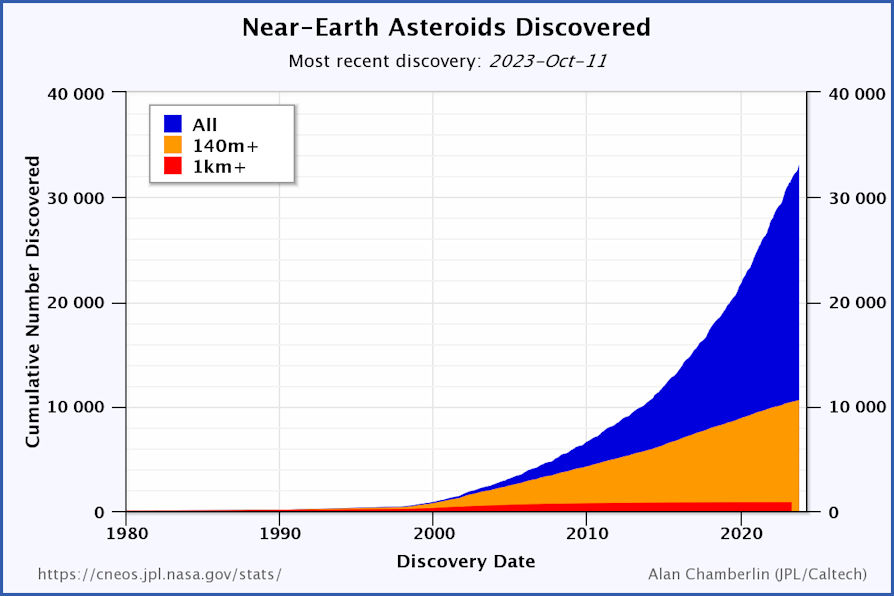
The discovery of the presence of iron, nickel and cobalt on two NEA asteroids, 1986 DA and 2016 ED85 has aroused much interest, showing a presence of metals on the surface equal to 85%1. This means that the quantity of metals present is higher than in terrestrial deposits of nickel, iron and cobalt.
Therefore the extraction of materials present on the NEA can no longer be considered merely an opportunity. Indeed, the resources on Earth are in exhaustion, while demand, economic and environmental costs are constantly rising. The impacts of this scenario reverberate on the availability of consumer goods with high added value, resulting in birth of conflicts national and global for the race for resources. Finally, the latest projections published by the UN on the increase in the world population predict that it will reach 10 billion by 2050. This fact will imply a structural increase in demand of 25% compared to today. For all these reasons, the exploitation of asteroid raw materials is today to be considered one existential necessity for man and his growth.
Robotic exploration on two asteroids: 433 Eros and 1221 Amor

Asteroids were identified as the mission target of the analysis: 433 Eros and 1221 Amor, belonging to the Amor subclass.
433 Eros coincides with the first asteroid on which a landing was made, which occurred on 12 February 2001 with the NEAR probe2, after about a year spent by it studying the orbital, morphological, topographic and compositional characteristics of the asteroid. Below are the main physical parameters of the body, obtained by combining observations from the ground and those of the NEAR mission:
THEalbedo it is a fundamental parameter that allows the spectral classification of asteroids based on their reflectance spectra, and provides information on their size. Furthermore, it is profoundly dependent on the surface chemical composition of the body. Specifically, 433 Eros belongs to the S spectral class, therefore it is dominated by silicates with contaminations of metals such as iron-nickel.
Instead, there is little information about 1221 love. While 433 Eros constitutes the ideal candidate for the initial phase of the mission, having a good amount of data with which to compare the observations of the payload instruments, the lack of spectral classification of 1221 Amor opens the way to different scenarios. In fact, it could belong to class M, particularly rich in metals and therefore from high economic value. Not only that, its orbit reaches a minimum distance from Earth equal to 0.11 AU and it has been calculated that between 2105 and 2153 it will make its closest approach seven times.3. The above two characteristics, combined with the estimated size, diameter of approximately 1 km, make it an interesting candidate for mining.
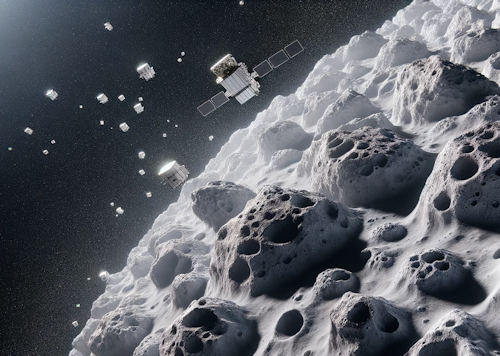
The foundations of the case study in question: prospects and practicability
The analysis aims to design a mission of study and evaluation of resources minerals present on 433 Eros and 1221 Amor, also providing information on their morphology, topography and possible presence of an intrinsic magnetic field. Designed as a modular mission, it can be adapted to numerous other NEAs and could constitute, thanks to the versatility of CubeSat, the starting point for mining missions even beyond Martian orbit, in the main belt.
In particular, the concept focuses on the release of two fleets of CubeSat near the two targets from a platform capable of first reaching 433 Eros, remaining in coplanar flight with the asteroid for some time, and then leaving again towards 1221 Amor.
Payload
For the detection of chemical elements and their relative abundances, an essential tool is the gamma ray spectrometer high resolution.
By observing the spectrum of the emerging radiation, the chemical composition and abundances of the elements present in the medium in which it propagated are identified, without having to land on the asteroid or excavate the surface.
A further aspect of interest is the magnetic field of the asteroids, which would provide information on its geological evolution and therefore on the chemical abundances present beneath the surface. One of the magnetometers flight proven with dimensions compatible with mounting on CubeSat is the DFGM4.
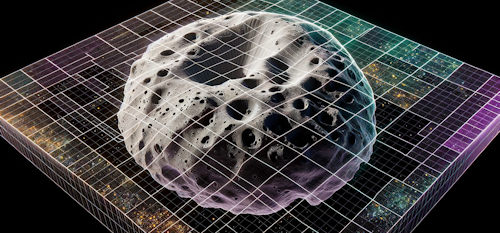 The morphological and topographical characteristics of asteroids are also crucial information for obtaining a detailed mapping of the celestial body, ensuring, among other things, identifying the best landing sites or instrumentation installations. The reference instrument, in this case, coincides with one room octave panchromatic similar to the one developed by the collaboration between Argotec and ASI, it can be allocated to a 6U CubeSat.
The morphological and topographical characteristics of asteroids are also crucial information for obtaining a detailed mapping of the celestial body, ensuring, among other things, identifying the best landing sites or instrumentation installations. The reference instrument, in this case, coincides with one room octave panchromatic similar to the one developed by the collaboration between Argotec and ASI, it can be allocated to a 6U CubeSat.
Finally, the bus used to transport the two CubeSat fleets could also be used as a site for scientific instrumentation. Being in coplanar orbits with the two targets, the rotation of the two asteroids could be exploited to carry out morphological, altimetric and reflectance measurements of their surfaces, through a LiDAR specially designed for the exploration of asteroids and comets. Among these, one of the most interesting is SALi5, which exploits the RZPN modulation technique of a fiber optic laser.
The inclusion of a LiDAR would provide complementary measurements to those carried out with the panchromatic camera, especially for the altimetric ones. Thus we could arrive at a complete understanding of the morphology and topology of the two bodies under examination, fully fulfilling the mission objectives.
Having chosen a modular design one can imagine three CubeSats operating for each asteroid. These, respectively, will house the gamma ray spectrometer, the magnetometer and the panchromatic camera.

To propose an estimate for the overall mass and dimensions of the six CubeSats, LiciaCube, a 6U and 14 kg satellite, considering all the subsystems, was taken as a reference.
Therefore, the scientific instrumentation would occupy a volume equal to 36U with a total mass of 84 kg. To this value must be added 10 kg of LiDAR mounted directly on the bus.
But which ones actors could they play a short-term role in the exploration and exploitation of asteroids? At the moment, nThere is no legislation unilaterally and globally recognized regarding the exploitation of mineral resources outside the Earth's atmosphere, but since 2015 national laws have been promulgated on the topic. The American CSLCA6 It recognizes that private individuals can extract and sell space resources for profit. It was followed by the Luxembourg “Law of 20 July 2017 on the exploration and use of outer space resources”7, according to which space resources can be used for commercial purposes by all citizens in possession of authorization.
While in the case of Luxembourg the choice is dictated by the attempt to carve out a role as a vanguard of New Space, the choice of the USA could have a completely different weight. This, in fact, aligns with the strategy in place since the retirement of the Space Shuttle, which has produced the entry of a new generation of private individuals into the space and launcher sector.
 Elon Musk's SpaceX has provided the USA with an important economic leverage, capable of outclassing the competition on the market, but also with a considerable strategic advantage over China and Russia. It is identifiable not only in the broadest sense access to space from its own territory, but also in projects such as the constellation Starlink and the program starshield. The number of satellites used, with very high resilience and global coverage, the direct application in the Russian-Ukrainian conflict and the making available of NASA databases for collision avoidance di Starlink, have alarmed the opposing chancelleries.
Elon Musk's SpaceX has provided the USA with an important economic leverage, capable of outclassing the competition on the market, but also with a considerable strategic advantage over China and Russia. It is identifiable not only in the broadest sense access to space from its own territory, but also in projects such as the constellation Starlink and the program starshield. The number of satellites used, with very high resilience and global coverage, the direct application in the Russian-Ukrainian conflict and the making available of NASA databases for collision avoidance di Starlink, have alarmed the opposing chancelleries.
Entirely similar scenarios could also recur in the context of space logistics (Blue Origin), and in that of space stations in low orbit (Axiom Space, Sierra Space, Nanoracks, VoyagLockheed Martin and Northrop Grumman). Similarly, NASA's strategy is consistent with that of the last decade, aiming to develop a widespread capacity for access, logistics, management and actual protection of low orbits. The same considerations can also be replicated in the case of returning to the Moon, therefore, it is difficult to imagine that the exploitation of the mineral resources of the NEA could be approached by the USA in a different way.
Clearly, to these strategic, industrial and political considerations must also be added the impossibility of states being able to become owners of celestial bodies8. In the unrealistic hypothesis in which this principle were to fail, it would still be difficult to imagine a prospect of redistribution of the wealth generated by the exploitation of the NEA. It does not seem to be a coincidence, therefore, that among the five main space mining companies in the world, three are American: Karman +, TransAstra and AstroForge.
It is clear that the great availability of resources, the ability to transform them and therefore create profit and development, is capable of attract customers, modifying in all respects the existing geopolitical structures. A recent example can be identified in BRI, Chinese-led counter-globalization, capable of attracting, with the signing of MoUs, 147 countries thanks to geoeconomic leverage9.
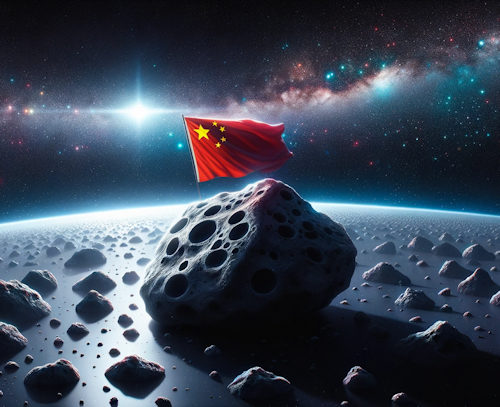 Therefore the exploitation of space mineral resources will be characterized by strong competition. On the one hand, the Western bloc, in which private companies will play the role of new space pioneers, competing with each other. The primary objective will be to free itself from Chinese supplies of rare earths10, to which will be added access to greater nickel deposits, 50% of which are located in Australia, Indonesia, South Africa, Russia and Canada.11. According to the latest estimates, the largest Australian and Canadian mining complexes will remain operational only until 2035, at the latest 204312, leaving the primacy of production to countries on the borders, at best, of the Chinese sphere of influence.
Therefore the exploitation of space mineral resources will be characterized by strong competition. On the one hand, the Western bloc, in which private companies will play the role of new space pioneers, competing with each other. The primary objective will be to free itself from Chinese supplies of rare earths10, to which will be added access to greater nickel deposits, 50% of which are located in Australia, Indonesia, South Africa, Russia and Canada.11. According to the latest estimates, the largest Australian and Canadian mining complexes will remain operational only until 2035, at the latest 204312, leaving the primacy of production to countries on the borders, at best, of the Chinese sphere of influence.
In the Western bloc, a climate of fierce confrontation, due to the large scale of investments, but also the returns. However, given the strategic value and the new military-industrial orientation of the US apparatus, the new pioneers will be strongly supported by public bodies, which will induce them to form a system13. Despite the returns at stake, in order to justify investments of this magnitude and encourage the consolidation of the bloc, the presence of a worthy opponent, capable of undermining Western primacy, especially technological. The tendency of democracies, in fact, is to react, not to act14. An approach that was recently repeated towards Russia after the Ukrainian invasion, a phenomenon that has, in fact, united and revived NATO.
La China, which aspires to leader of the Global South, embodies this role perfectly. In addition to the aforementioned BRI (Belt and Road Initiative, ed.), Chinese diplomacy has launched various multilateral initiatives starting from 2021. The first is the GDI (Global Development Initiative, ed.) which aims to accelerate the achievement of the SDGs (Sustainable development goals, ed.) by 203015. Added to this were the GSI (Global Security Initiative, ed.) and the GCI (Global China Initiative, ed.), respectively the programmatic points of the security architecture and the cultural pillar of the Chinese-led system, naturally alternative to the Western ones16. However vague, these policy documents outline a new international order, based on "tolerance, coexistence, exchanges and mutual learning"17. These initiatives, as a whole, are oriented towards the Global South which has repeatedly found itself in antithesis with the Western bloc.
In this context, China can take on the leading role, through the aforementioned cooperation projects and economic leverage. In particular, Beijing has put a lot of effort into the UNOOSA "Access to Space for All" program, guaranteeing opportunities for scientific research on Tiangong 1. Although open to scientific collaboration, it is unlikely to opt for the creation of a joint space exploration program with other powers or developing countries, in fact there are no particular openings in the development of the infrastructure necessary to settle on the Moon, exploit the NEA or land on Mars18. Rather, It is likely that the proceeds obtained from controlling asteroids will be used to finance Chinese-led globalization ambitions, using geoeconomic leverage to undermine US dominance.
►Read the first part "The solar system, the resource of the future (1/4): science and technology in space exploration"
►Read the third part "The solar system, the resource of the future (3/4): lunar exploration"
►Read the fourth part "The solar system, the resource of the future (4/4): ethical-psychological considerations on human space exploration"
Sources
1 JA Sanchez et al. Physical characterization of metal-rich near-earth asteroids 6178 (1986 da)
and 2016 ed85. The Planetary Science Journal, 2(5):205, 2021.
2 AF Cheng et al, Near-
earth asteroid rendezvous: Mission overview. Journal of Geophysical Research: Planets,
102(E10):23695–23708, 1997.
3 Comprehensive Asteroids and Comets Database. https://www.spacereference.org/
asteroid/1221-amor-1932-ea1
4 D. Miles et al, A miniature, low-power scientific fluxgate magnetometer: A stepping-stone to cube-satellite constellation missions. Journal of Geophysical Research: Space Physics, 121(12):11–839, 2016.
5 X. Sun et al, Small all-range lidar for asteroid and comet core missions. Sensors, 21(9):3081, 2021
6 Commercial Sapace Launch Competitiveness Act. https://www.congress.gov/bill/114th-congress/house-bill/2262/text.
7 Law of 20 July 2017 on the exploration and use of outer space resources. https://space-agency.public.lu/en/agency/legal-framework/law_space_resou....
8 United Nations Office for Outer Space Affairs - Outer Space Treaty. https://www.unoosa.org/oosa/en/ourwork/spacelaw/treaties/outerspacetreat....
9 F. Casarotto. Someone save the new silk roads. Domino, 3(1):120–128, 2023
10 ISPI - Rare earths. https://www.ispionline.it/it/pubblicazione/terre-rare-loccidente-appront...
11 Nickel Institute. https://nickelinstitute.org/en/about-nickel-and-its-applications/
12 Mining Technology. https://www.mining-technology.com/marketdata/ten-largest-nickels-mines/.
13 F. Maronta. The private arm of the state in new space. Limes, 12(1):69–81, 2021.
14 C. Pelanda. Probable space war scenarios. Limes, 12(1):85–92, 2021.
15 Nikkei Asia - Global Development Initiative. https://asia.nikkei.com/Opinion/
China-s-Global-Development-Initiative-is-not-the-BRI-reborn.
16 F. Casarotto. Beijing dreams of the southern hemisphere. Domino, 6(1):21–27, 2023.
17 The State Council of the People's Republic of China. http://english.www.gov.cn/news/topnews/202303/15/content_WS6411d42ac6d0f...
18 N. Goswami. China in space: Ambitions and possible conflict. Strategic Studies Quarterly,
12(1):74–97, 2018
Photo: OpenAI / author

